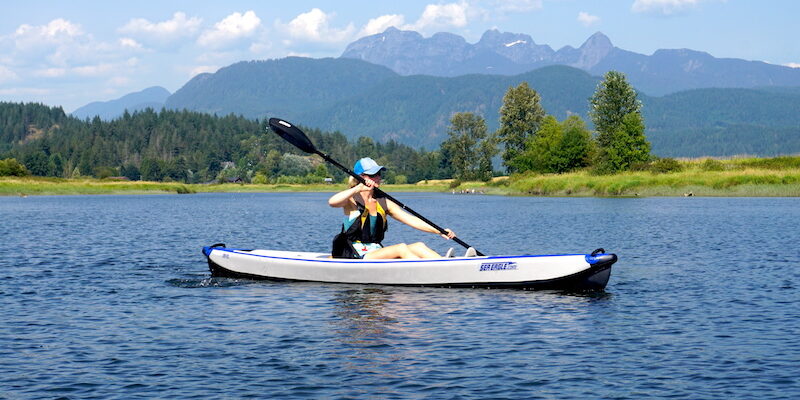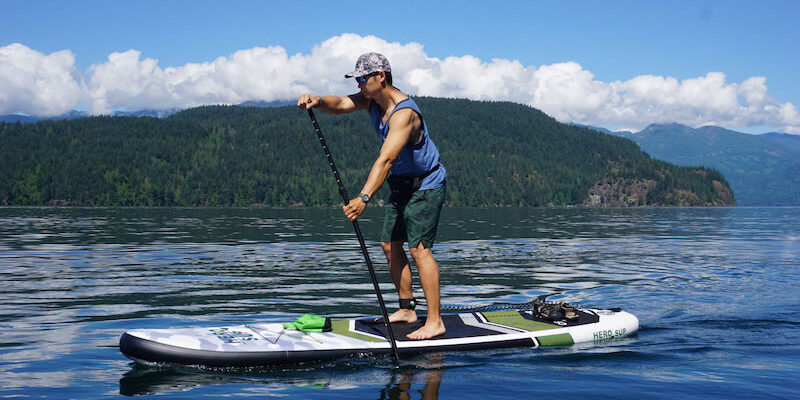Not sure if many people have already heard of it but I thought it was so cool, I had to share it with all of you.
The Flyak, as I have recently learned, is a kayak with hydrofoils. Not being completely familiar with hydrofoils, I looked it up and according to Wikipedia they are:
“…wing-like structures mounted on struts below the hull of a variety of boats, which lifts the boat out of the water during forward motion, in order to reduce hull drag”.
Essentially a boat with hydrofoils is raised out of the water once the boat reaches a certain speed… this results in a reduction in hull drag, which further results in increased speed.
Hydrofoils are well established for motor and man powered watercraft, but the Flyak is the first to incorporate the design into a commercially marketed kayak.
Peter Ribe and Einar Rasmussen – two world-class paddlers, designed the Flyak. Rasmussen’s goal is for the Flyak to replace racing kayaks in Olympic competitions. If you watch the videos down below you can see how that could be very possible.
The World Record speed for a racing kayak right now is 32 KMH (19.2 MPH). The Flyak is looking to break that record.
How the Flyak Works
I was reading the other day about the Flyak – a kayak that flies just above the surface of the water once it reaches a certain speed.
The Flyak starts off like a regular conventional kayak. However once the paddler reaches a speed of roughly 10 KMH (6 MPH), the front foil lifts until it is about one chord length under the surface.
At this point the Flyak is tilted about 1 degree backwards as it gets ready for takeoff.
When the speed reaches 25% higher, the hull is lifted out of the water. As far less surface area of the hull is dragging against the water, there is very little resistance.
Consequently the Flyak is able to takeoff and reach speeds of 27.2 KMH (16.9 MPH).
At high speeds the entire hull is lifted 15 cm (5.9 in) from the water (less than one chord length)
At one chord length under the surface, the lifting ability of the hydrofoil decreases. The Flyak is kept level by leaning the hydrofoils against the surface. The foil winglets also add lift and directional stability.
The Limitations
It is said that in theory the Flyak can achieve speeds of almost twice as fast as conventional championship-level racing kayaks.
The limit is in the human paddling it. It takes intense energy for the paddler to keep up on the foils. Therefore for the time being it is only ideal for short races.
Design
The whole concept of the design is driven by performance. The three main criteria were:
- light weight
- high strength
- robustness
Other features that were carefully considered were:
- ergonomic cockpit with least amount of water-gathering
- completely water-tight body – cannot take in water or sink
- 5200 mm carbon-fiber hull
The hull is not much different than a regular racing kayak. If you remove the foils, the boat can be used as a normal racing kayak.
The Flyak has two hydrofoil fins below the surface of the water to create lift. At high speeds the entire hull is lifted 15 cm (5.9 in) from the water, reducing the drag and allowing greater speeds – reportedly more than twice the speed of a conventional kayak.
The price for this hydrofoil kayak is approximately $2500US. Definitely looks strange but wouldn’t you love to take one of these for a ride?!
YouTube Videos
A 200 m sprint was performed pitting Olympic athlete Andreas Gjersøe in a Flyak against the four-man Norwegian National Team in a K4 kayak November 13, 2005. This race was featured on “Beyond Tomorrow” broadcast on February 8, 2006.
It was reported that the Flyak won by a boat length. A K1 sprint specialist in a conventional kayak would expect to be some five seconds slower than a four-man boat over 200 m.
The Flyak Vs. a K1 Sprint Kayak
Find more paddling news on our kayaking blog.


Is it possible to buy such a pair of foils? Where? Thanks Jörn
With leg based propulsion, one would blow them away!
Go build it, so I can buy one 😉
Where can I get a flyak? Or are there any instructions available to build the foils?
Did you get one? and where?
I’ve seen these foils attached under surfboards, but longer about 2-3 feet long… no need to paddle, just a good wave. I assume that you have to be a real good and strong paddler with staying power to achieve the “lift”. Curious as to the cost of the kayak.